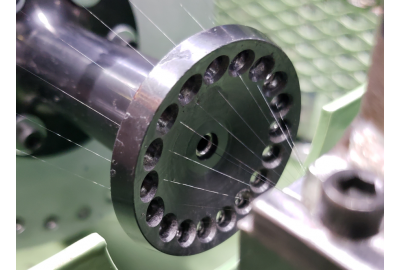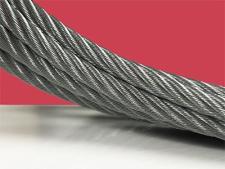Motion cables are used in virtually any application where power is mechanically transferred from one component or area to another. Aircraft use motion cables in landing gear, engine controls and a host of vital flight control systems. Aircraft control cable is even found in the seats and seat-back trays we use in flight. Hoisting or lifting objects ranging in size from massive I-beams, to tiny nuts and bolts are moved into position, and in and out packing boxes using motion cables as well. A vehicle clutch pedal or accelerator are powered in part by motion cables too. Truth is that the flights we take every day, the cars we operate daily too, and many of the infrastructures that orbit us is outfitted with motion cable.
It is because of the versatility of wire rope that engineers must be deeply educated on tensile strength, as well as the impact that wire rope diameter and strand constructions can have on tensile strength, along with other critical characteristics such as cycle count and flexibility.
Working Load Limit
All wire ropes are tested for breaking strength. Motion cables have a minimum breaking strength requirement, which is determined by the material, diameter and construction of the wire rope. At Carl Stahl Sava Industries, wire rope is tested on tensile strength equipment. Either or both the wire rope itself can be tested against the minimum load requirement, or the fittings swaged to the wire rope can be similarly tested for their holding strength on the cable.
To ensure wire rope stays within its specified tensile limits, engineers will derate the minimum cable tensile strength by a safety factor. This is how engineers arrive at what is known as the Working Load Limit or WLL. The WLL safety factor of each cable being tested is application specific, but often times a factor of 3 to 5 is utilized. Divide the minimum tensile strength by the safety factor to calculate the safe working load limit for a specific cable.
How Strong Is Steel Cable?
Steel cables are made more durable in part due to a manufacturing process known as cold working or cold forming, where the material is shaped below its recrystallization temperature. Cold worked steel distorts the steel’s crystal grains in the flow of the metal, resulting in hardening of the material, thus strengthening it. Due to steel’s natural strength, combined with its well-known resistance to corrosion, engineers turn to steel cables for applications where exposure to harsh environments does not compromise wire rope integrity.
At Sava, we ensure that our steel cables are manufactured using 304, 305 and 316 stainless steel, all of which significantly reduce the risk of corrosion, apart from those exposed to seawater. The general rule of thumb, however, is that engineers should never exceed the manufacturer's limitations when using steel cables.
Stranded Cable vs. Braided Cable
Although commonly mistaken for stranded cable, braided cable refers to the braided wrapping or insulation found in conductive cables, such as those transmitting power or data. This braided “jacket” insulates and strengthens the conductive, data or electric cable, making it more tolerant to time in the field, along with the twisting, turning and rolling to which braided cable is commonly exposed. Sava does not manufacture braided cable or other conductive cable, like coaxial and network cable, as none of these cables, commonly braided in nature, actuate motion.
Interestingly, even Google machine learning algorithms struggle to understand the differences between motion cable, such as steel wire rope or tungsten mechanical cable, and cables that transmit electricity or information. When a searcher uses Google or other common search engines like Bing or Yahoo! to find steel cable manufacturers like Sava, or for that matter, a maker of braided cable, the search engine confuses the two and often serves the wrong cable to the searcher.
Cable Design
Wire rope manufacturers offer a wide range of what is known as “cable constructions,” which characterizes the number of individual wires used to stranded the wire rope. Consequently, most wire rope comprises a center or “core” wire, that is then wrapped in more wires, thus completing the stand’s construction. In the case of a 1x7 steel cable construction, the core wire represents wire #1, wrapped in six additional wires. Hence 1x7 steel cable.
In many cases, that same 1x7 steel cable is then used as the core in the manufacture of larger, stronger and more durable steel cable. For instance, 7x19 steel cable strand comprises the original seven wires, or 1x7 strand, and is wrapped in 12 more wires, thus making a 7x19 construction. Said another way, the 7x19 wire rope consists of the original 1x7 strand, plus 12 additional wires, making for a total of 19 wires.
Less seldom are wire rope constructions that do not include a core wire. In these cases, take 3x7 cable construction for instance, three, 1x7 stranded wire ropes are wrapped around one another, forming a triangular-shaped wire rope construction.
Give Us a Call
Sava offers a wide array of cable constructions, manufactured in stainless steel, galvanized steel, coated or bare, as well as tungsten cables and those made from other more exotic materials. For a quotation on any product on our catalog or further assistance, get in touch with our team of engineers. At Sava, we offer the highest quality materials at affordable rates. Contact us today to get started.






